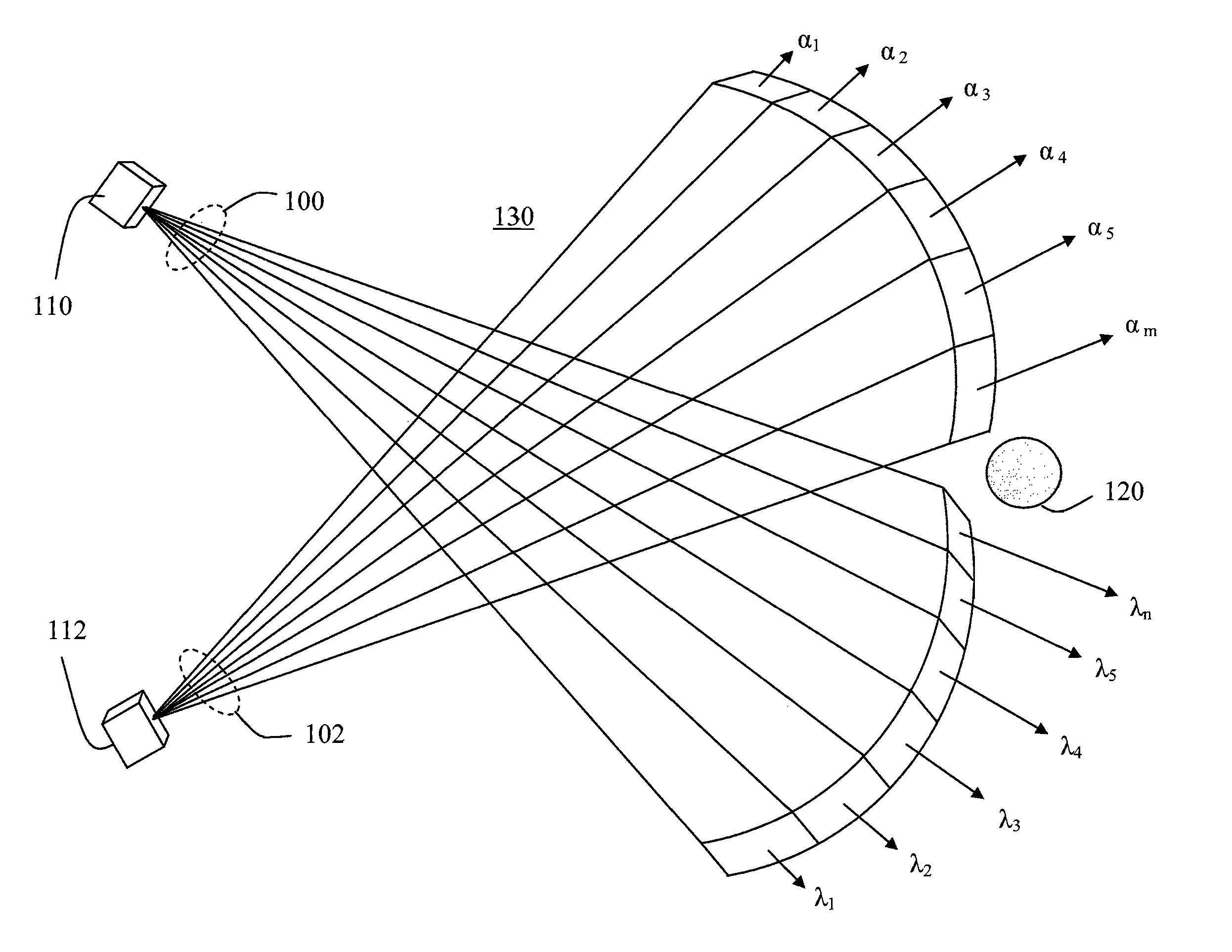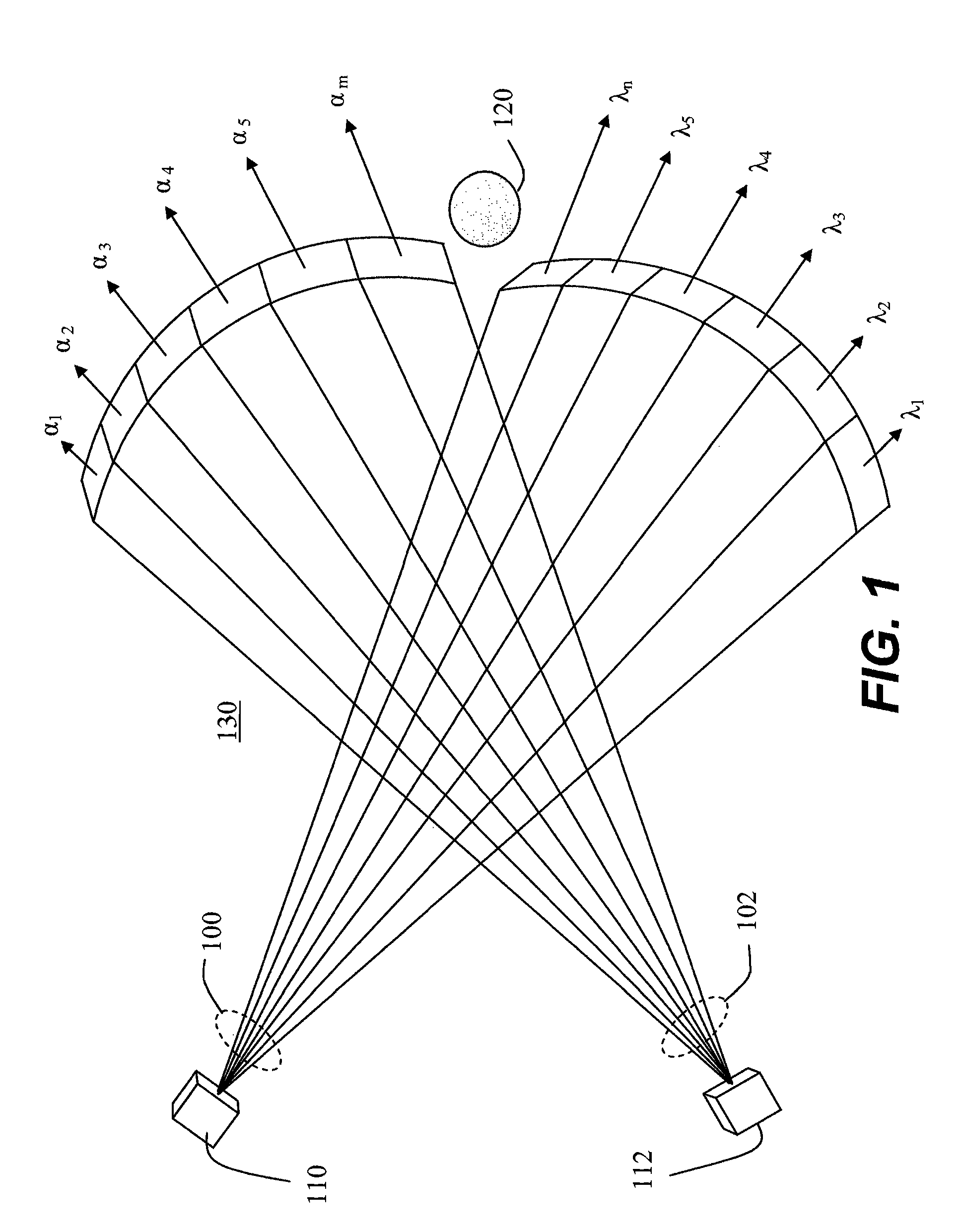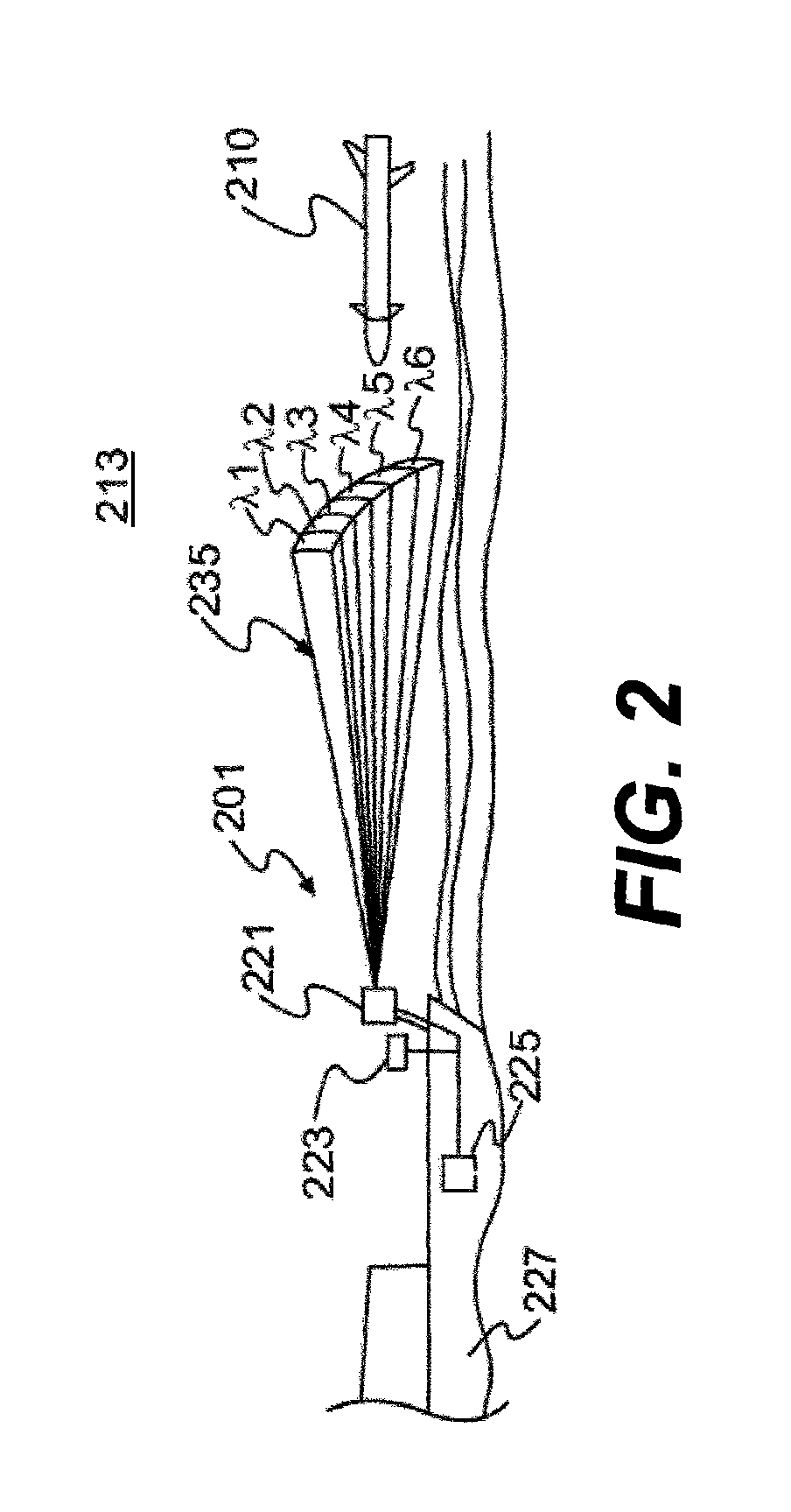Apparatus and method for spatial encoding of a search space
a technology of spatial encoding and apparatus, applied in surveying and navigation, distance measurement, instruments, etc., can solve the problems of refractive turbulence effect, difficult detection of shsos, and increased difficulty in operation
- Summary
- Abstract
- Description
- Claims
- Application Information
AI Technical Summary
Benefits of technology
Problems solved by technology
Method used
Image
Examples
Embodiment Construction
Acronyms
[0020]1-D—One Dimensional[0021]2-D—Two Dimensional[0022]3-D—Three Dimensional[0023]AFV—Autonomous Flying Vehicle[0024]AM—Amplitude Modulated[0025]ASV—Autonomous Swimming Vehicle[0026]CT—Computed Tomography[0027]CW—Continuous Wave[0028]DIAL—Differential Absorption LIDAR[0029]EM—Electromagnetic Radiation[0030]FM—Frequency Modulated[0031]GPS—Global Positioning System[0032]ITF—Image Transfer Function[0033]LED—Light Emitting Diode[0034]LIDAR—Light Detection and Ranging[0035]PET—Positron Emission Tomography[0036]SERS—Spatially Encoded Radiation Signal[0037]SHFO—Surface-Hugging Flying Object[0038]SHMO—Surface-Hugging Moving Object[0039]SHSO—Surface-Hugging Swimming Object[0040]SPECT—Singe Photon Emission Computed Tomography[0041]TOF—Time of Flight[0042]UV—Ultra Violet
[0043]The present invention provides a method and apparatus for the detection and tracking of stationary and moving objects, in particular surface-hugging moving objects (SHMOs), within a search space. The search space...
PUM
 Login to View More
Login to View More Abstract
Description
Claims
Application Information
 Login to View More
Login to View More - R&D
- Intellectual Property
- Life Sciences
- Materials
- Tech Scout
- Unparalleled Data Quality
- Higher Quality Content
- 60% Fewer Hallucinations
Browse by: Latest US Patents, China's latest patents, Technical Efficacy Thesaurus, Application Domain, Technology Topic, Popular Technical Reports.
© 2025 PatSnap. All rights reserved.Legal|Privacy policy|Modern Slavery Act Transparency Statement|Sitemap|About US| Contact US: help@patsnap.com



